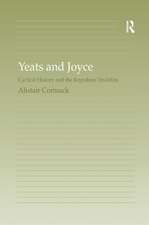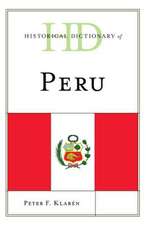The Position of the German Language in the World
Autor Ulrich Ammon Traducere de David Charlstonen Limba Engleză Hardback – 5 sep 2019
From the perspective of the global language constellation, the detailed data analysis of this substantial research project depicts German as an example of a second-rank language. The book also provides a model for analysis and description of international languages other than English. It offers a framework for strengthening the position of languages such as Arabic, Chinese, French, Portuguese, Spanish and others and for countering exaggerated claims about the global monopoly position of English. This comprehensive handbook of the state of the German language in the world was originally published in 2015 by Walter de Gruyter in German and has been critically acclaimed.
Suitable for scholars and researchers of the German language, the handbook shows in detail how intricately and thoroughly German and other second-rank languages are tied up with a great number of societies and how these statistics support or weaken the languages’ functions and maintenance.
| Toate formatele și edițiile | Preț | Express |
|---|---|---|
| Paperback (1) | 433.58 lei 43-57 zile | |
| Taylor & Francis – 29 aug 2022 | 433.58 lei 43-57 zile | |
| Hardback (1) | 1460.09 lei 43-57 zile | |
| Taylor & Francis – 5 sep 2019 | 1460.09 lei 43-57 zile |
Preț: 1460.09 lei
Preț vechi: 2120.15 lei
-31% Nou
Puncte Express: 2190
Preț estimativ în valută:
279.39€ • 292.44$ • 232.54£
279.39€ • 292.44$ • 232.54£
Carte tipărită la comandă
Livrare economică 31 martie-14 aprilie
Preluare comenzi: 021 569.72.76
Specificații
ISBN-13: 9781138717657
ISBN-10: 1138717657
Pagini: 672
Ilustrații: 26 Line drawings, black and white; 107 Tables, black and white; 26 Illustrations, black and white
Dimensiuni: 174 x 246 x 43 mm
Greutate: 0.45 kg
Ediția:1
Editura: Taylor & Francis
Colecția Routledge
Locul publicării:Oxford, United Kingdom
ISBN-10: 1138717657
Pagini: 672
Ilustrații: 26 Line drawings, black and white; 107 Tables, black and white; 26 Illustrations, black and white
Dimensiuni: 174 x 246 x 43 mm
Greutate: 0.45 kg
Ediția:1
Editura: Taylor & Francis
Colecția Routledge
Locul publicării:Oxford, United Kingdom
Cuprins
A. The German Language between National Interests and Global Communication: Terminology and Theory
B. ‘German language’, ‘German-language territory’: what these terms include and exclude, and the question of a German ethnic group
C. Speaker numbers and economic strength of German
D. German as official language of state
E. German as minority language, but not official language of state
F. German in international business communicationG. German for international scientific and academic communication
H. German in Diplomacy and the European Union (EU)
I. German in Media and Language Arts outside the German-Language Territory
J. German as a foreign language (GFL) outside the German official-language territory
K. Policies for promoting the German language in the world
B. ‘German language’, ‘German-language territory’: what these terms include and exclude, and the question of a German ethnic group
C. Speaker numbers and economic strength of German
D. German as official language of state
E. German as minority language, but not official language of state
F. German in international business communicationG. German for international scientific and academic communication
H. German in Diplomacy and the European Union (EU)
I. German in Media and Language Arts outside the German-Language Territory
J. German as a foreign language (GFL) outside the German official-language territory
K. Policies for promoting the German language in the world
Notă biografică
Ulrich Ammon was Professor of German Linguistics with Sociolinguistics at the University of Duisburg-Essen. He taught at universities all over the world, including: The University of North Carolina, Chapel Hill, USA; in Australia at the University of Sydney, Australian National University in Canberra; in Japan at Dokkyo University, Soka; and in Austria at Vienna University. Ammon was a member of several scientific organisations and was President of the International Association of Applied Linguistics (GAL) from 2003–2006. He was involved in many third-party projects funded by the German Research Foundation, the Volkswagen Foundation, the Fritz Thyssen Foundation, the European Union and the German Academic Exchange Service. His main research interests were: sociolinguistics, language policy, international language research, variation linguistics and dialectology.
Descriere
The Position of the German Language in the World focuses on the global position of German and the factors which work towards sustaining its use and utility for international communication.

























